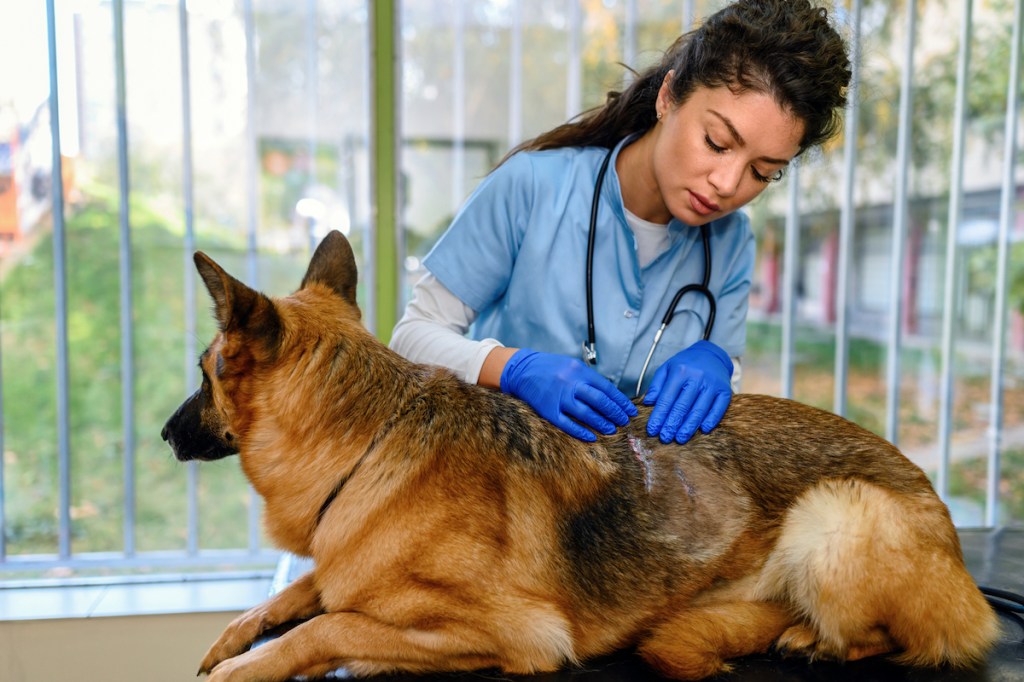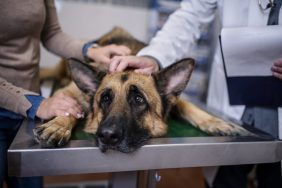Cutaneous asthenia in dogs is a medical condition that causes the skin to droop and stretch. Technically, it is caused by a lack of collagen. Technically, the disorder is also known as Ehlers-Danlos syndrome — or EDS — in dogs.
Unfortunately, the condition is genetic. This means a dog is born with it. Also, certain breeds — including Beagles, Boxers, and Poodles — seem to be predisposed to cutaneous asthenia.
If you see signs that your dog might be suffering from this disorder, then you must consult your veterinarian for a proper diagnosis and course of treatment. Here’s what you should know about the symptoms, causes, and treatments of cutaneous asthenia in dogs.
Symptoms of cutaneous asthenia in dogs
Cutaneous asthenia in dogs can result in a range of symptoms. Generally, these symptoms affect the skin but can also appear elsewhere as the complaint worsens.
Specifically, some of the most common symptoms of the condition include:
- Sagging skin
- Thin skin
- Skin tears
- Bruising
- Skin with more folds in it
- Swollen joints (including elbows)
- Loose joints and joint hypermobility
- Cuts on the back and head areas
- Hip problems
- Internal bleeding
- Eye lens dislocation
Causes of cutaneous asthenia in dogs

The cause of the condition is genetic or hereditary. This means a dog is born with it. As such, a pup can receive the genetic mutation from just one or both parents.
Additionally, Ehlers-Danlos syndrome affects certain breeds more than others. In particular, the following breeds are more likley to experience this collagen disorder:
- Springer Spaniel
- German Shepherd
- Beagle
- Saint Bernard
- Welsh Corgi
- English Setter
- Boxer
- Irish Setter
- Manchester Terrier
- Keeshond
- Red Kelpie
- Poodle
- Dachshund
- Greyhound
Treatments for cutaneous asthenia in dogs
Firstly, if you think that your dog might be experiencing issues related to this disorder, your vet will carry out a full physical examination of your dog. Additionally, your vet will ask about your dog’s complete medical history. This will include any breed-specific problems.
Secondly, your vet will test the stretchability of your dog’s skin. Technically, this is measured on the Skin Extensibility Index (SEI). Usually, a score on the test of over 14.5 confirms the condition.
Unfortunately, there is no current treatment for Ehlers-Danlos syndrome. However, lifestyle change can help manage it. For instance, keeping your canine away from other pups can help avoid injury. Similarly, making sure your home environment is safe and doesn’t contain sharp corners will benefit your dog. Also, in some cases, vitamin C supplements have proved to help dogs with cutaneous asthenia.
Generally, your vet will also treat any cuts or wounds your dog has suffered due to the disorder. For example, antibiotics are commonly needed to avoid infection. As always, if your vet prescribes any medication, follow the precise dose and frequency instructions. Also, complete the full course of medicine.
Unfortunately, in chronic cases of cutaneous asthenia, euthanasia might need to be considered. Your vet can talk you through this difficult decision. Additionally, it is usually recommended that dogs with this condition are spayed or neutered. Specifically, this is suggested in order to prevent injury during mating or labor, as well as to avoid passing on the affected genes to offspring.















